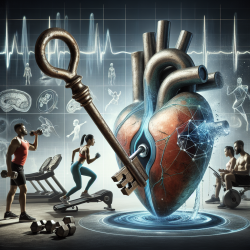In the ever-evolving world of exercise science, understanding how our bodies respond to physical activity is crucial for optimizing performance and health. A recent study titled "Central Hemodynamics Measured During 5 Repetition Maximum Free Weight Resistance Exercise" sheds light on a novel approach to monitoring cardiovascular responses during resistance training using bioimpedance cardiography.
The Study's Core Findings
The research utilized the PhysioFlow™ device, a non-invasive tool that measures central hemodynamics through bioimpedance cardiography. Thirty participants, both male and female, ranging from beginner to advanced lifters, engaged in a 5 repetition maximum (5RM) for exercises like back squats, seated push presses, and bicep curls. The study revealed significant increases in heart rate (HR) and cardiac output (Q) from rest to each repetition across all exercises. However, no significant changes were observed in stroke volume (SV) or ejection fraction (EF).
Implications for Practitioners
The findings offer several insights for practitioners looking to enhance their skills:
- Monitoring Cardiovascular Responses: Understanding HR and Q dynamics during resistance exercises can help tailor training programs to individual needs, optimizing cardiovascular health and performance.
- Non-Invasive Techniques: The PhysioFlow™ offers a non-invasive method to monitor hemodynamic variables, making it accessible for various populations without the need for invasive procedures.
- Diverse Applications: This approach can be particularly beneficial for clinical populations or those with cardiovascular concerns, allowing for safer exercise prescriptions.
The Path Forward: Encouraging Further Research
The study highlights the need for further research to validate these findings across different populations and exercise protocols. Future studies could explore:
- The accuracy of bioimpedance cardiography in measuring blood pressure during resistance exercises.
- The application of this technology in clinical settings, particularly for individuals with cardiovascular conditions.
- A comparison between bioimpedance cardiography and traditional methods like echocardiograms under various exercise conditions.
This research opens doors to new possibilities in exercise science, offering practitioners a tool to fine-tune training regimens while ensuring safety and efficacy.
Central Hemodynamics Measured During 5 Repetition Maximum Free Weight Resistance Exercise










